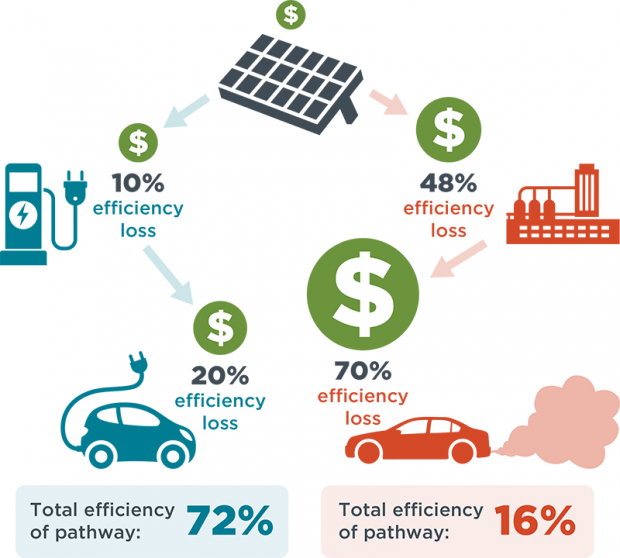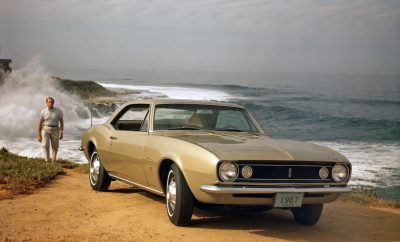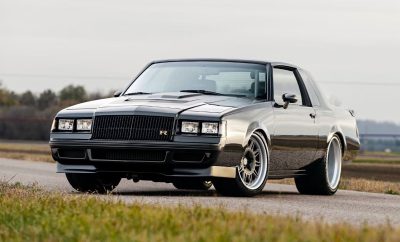Best Muscle Cars
Will e-Fuels Be the Future For Muscle Cars?

By Dave Ashton
With all the talk of electric vehicles taking over the planet, it’s left muscle car fans and classic collectors scratching their heads over future fuel sources. Will it turn into a Mad Max situation were we have to scour desert landscapes for the merest drop of fuel? Hopefully, e-Fuels may come to the rescue, with early results showing promise.
In today’s rundown, we will look at the current state of e-Fuels, the pros, and cons and what it could mean for the future of muscle cars.
What are e-Fuels?
According to the e-Fuels Alliance, e-Fuels are produced from electricity coming from renewable energy sources. These fuels don’t release any CO2, and should be climate neutral. These fuels can be used by any internal combustion engine(ICE) from airplanes to ships, existing transport, heating systems, and of course muscle cars.
The main idea behind the process is to break down water to extract oxygen and hydrogen. The second step in the process is called Fischer-Tropsch synthesis, where CO2 is extracted from the air and mixed with hydrogen to produce a liquid – e-Fuels. This liquid will hopefully replace regular gas-powered engines, oil, and kerosene, and can also be mixed with conventional fuels.
The advantages of this new e-Fuel are twofold. The ability to transport and store renewable energy. The existing infrastructure doesn’t need changing either, and e-Fuels will be far cheaper in the future than existing fuels like diesel.
If you want to read a more in-depth study on e-Fuels, then vda.de has a downloadable PDF on the subject available here.
Car Manufacturers Currently on Board With e-Fuels
We would ideally want the first carmakers to jump on board with e-Fuels to be Chevrolet, Dodge, and Ford. These being the most popular muscle car producers. We can forgive Dodge in this department as there are currently working out who is doing what in the Stellantis merger. But some carmakers are testing the waters which include Porsche, Mazda, and Audi.
In an interview with Evo magazine, Dr. Frank Walliser, vice president of Porsche gave his take on the subject.
From the article and interview:
‘Synthetic fuels are very important to allow us to reduce our CO2 output. Emissions are way better than current pump fuel, with less particulates and less NOx produced; synthetic fuels have between eight to ten components whereas petrol today has 30-40 and not all of them are welcome,” Walliser explained.
“Synthetic fuel is cleaner and there is no bi-product and when we start full production we expect a CO2 reduction of 85 percent. From a ‘well to wheel’ perspective – and you have to consider the well to wheel impact of all vehicles – this will be the same level of CO2 produced in the manufacture and use of an electric vehicle.’
Mazda have also joined the eFuel Alliance, according to Engine Technology International.com, stating that they are strong advocates for multi-solution approaches.
The Mazda spokesman stated, ‘We believe that with the necessary investment, CO2 e-fuels and hydrogen will make a credible and real contribution to emissions reduction – not only for newly registered cars, but for the current fleet. This would open up a second and faster route to achieving climate neutrality in transport, hand in hand with continued electrification.’
Audi is also looking into e Fuels, as shown on their media center. Their version of eFuel which is called ‘e-benzin’ hasn’t had an update on their website since 2018, but testing looks to be in progress.
Planes and Ships The First To Use e-Fuels?
While the initial findings for e-Fuels look very promising for cars in general, ships and planes will most likely be prioritized. A study by Ricardo Energy & Environment shows that transport that cannot use batteries, like ships and planes will create a large demand for e-Fuels.
In essence, producing e-Fuels just for the car market will put a large burden on the infrastructure above electric vehicles.
The Downsides
Before we all start dancing a jig with a viable alternative to fossil fuels, there are a few caveats. The technology looks promising, but it’s still in its early days.
Producing e-Fuels is currently very inefficient. Roughly only half of the electrical energy is converted into a usable fuel source. Once the e-Fuel hits the engine, the efficiency drops to 16%. Wind and solar equipment is still costly, but prices are dropping every year. On the flip side, electric vehicles only lose 10% of energy in the charging process, and 20% used by the motor, leaving an efficiency of 72%.
Therefore, e-Fuels need to increase their energy efficiency conversions before they become viable alternatives.

Image Credit: theicct.org
Conclusion
Although e-Fuels may not currently have the efficiency of conventional electric motors, the technology still has legs. Large-scale transport is the most likely first user, with fuels then trickling down to the car market. With so many ICE cars currently on the road, along with the rare and cherished examples, a renewable liquid fuel source will be needed for the foreseeable future.
It’s highly unlikely that a cherished 1968 Dodge Charger will be forced in the future to have an electric engine fitted. Therefore, Some form of compatible fuel will be available to keep these historically significant vehicles going.









0 comments